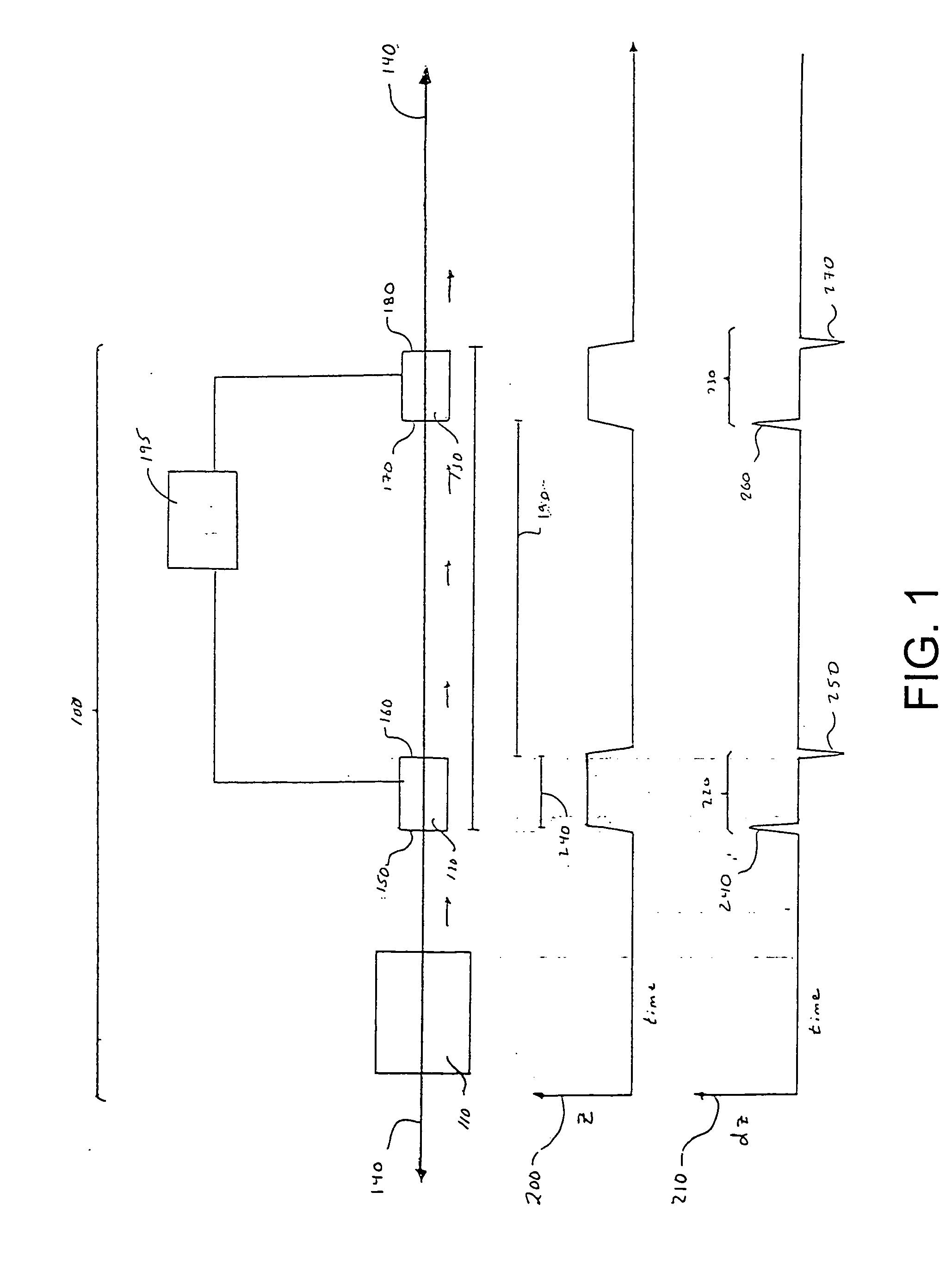Inductive detection for mass spectrometry
a mass spectrometry and inductive detection technology, applied in the direction of electron/ion optical arrangement, particle separator tube details, separation process, etc., can solve the problem of low overall efficiency of current mass spectrometers, unrealized quantitative analysis potential of biological samples, and low overall efficiency
- Summary
- Abstract
- Description
- Claims
- Application Information
AI Technical Summary
Benefits of technology
Problems solved by technology
Method used
Image
Examples
example 2
Ion Detection in Coincidence
[0134] The ability of the present invention to provide ion detection in coincidence was evaluated by analyzing liquid samples containing known quantities of polypeptide analytes using two inductive detectors sequentially positioned along the charged particle detection axis. The coincidence measurements confirm the ability of the inductive detectors to sensitively detect packets of ions without destroying them. In addition, the measurements show that the present invention is capable of efficient multiple detection of packets of ions.
[0135] Ions from polypeptide analytes were generated using a MALDI source and accelerated by an electrostatic potential applied by an electrode. A portion of the ions accelerated were sampled by an aperture positioned approximately 10 cm from the ion source. Upon translating through the sampling aperture, the ions were conducted through an analysis and detection region, wherein the ions passed through the axial bore of a first ...
example 3
Time-of-Flight Measurements Using a Fully Shielded Inductive Detector
[0140] In another aspect, the present invention comprises fully shielded inductive detectors having a shield element that entirely surrounds one or more sensing electrodes. The ability of fully shielded inductive detectors of the present invention to detect and analyze the flight times of charged particles generated from biopolymers was evaluated. Use of fully shielded inductive detectors provides better sensitivity and more accurate timing resolution compared to partially shielded inductive detectors.
[0141] FIG. 10 is a schematic diagram illustrating an exemplary fully shielded inductive detector of the present invention. As shown in FIG. 10, fully shielded inductive detector (900) comprises a tubular sensing electrode (910) having an axial bore concentrically positioned about charge detection axis (140), an insulator (920) and a shielding element (930) having a axial bore concentrically positioned about charge de...
example 4
MALDI Flight Tube Detector
[0150] The inductive detection systems of the present invention are high versatile and may be adapted to provide ion detection in coincidence for a wide range of commercial instruments, including MADLI ion sources and mass spectrometers, ESI ion sources and mass spectrometers, tandem mass spectrometers, TOF-TOF instruments, single quandrupole mass spectrometers, triple quadrupole mass spectrometers, linear ion traps, quadrupole--time-of-flight mass spectrometers and Fourier transform ion cyclotron resonance mass spectrometers. FIG. 12 is a schematic diagram of an exemplary inductive detector of the present invention well-suited for incorporation into conventional mass spectrometers utilizing time-of-flight detection. The exemplary detector (1100) comprises first and second inductive detectors (1101) and (1102), preferentially fully shielded inductive detectors, which are housed in housing (1110). In a preferred embodiment, housing (1110) is designed such th...
PUM
 Login to View More
Login to View More Abstract
Description
Claims
Application Information
 Login to View More
Login to View More - R&D
- Intellectual Property
- Life Sciences
- Materials
- Tech Scout
- Unparalleled Data Quality
- Higher Quality Content
- 60% Fewer Hallucinations
Browse by: Latest US Patents, China's latest patents, Technical Efficacy Thesaurus, Application Domain, Technology Topic, Popular Technical Reports.
© 2025 PatSnap. All rights reserved.Legal|Privacy policy|Modern Slavery Act Transparency Statement|Sitemap|About US| Contact US: help@patsnap.com



